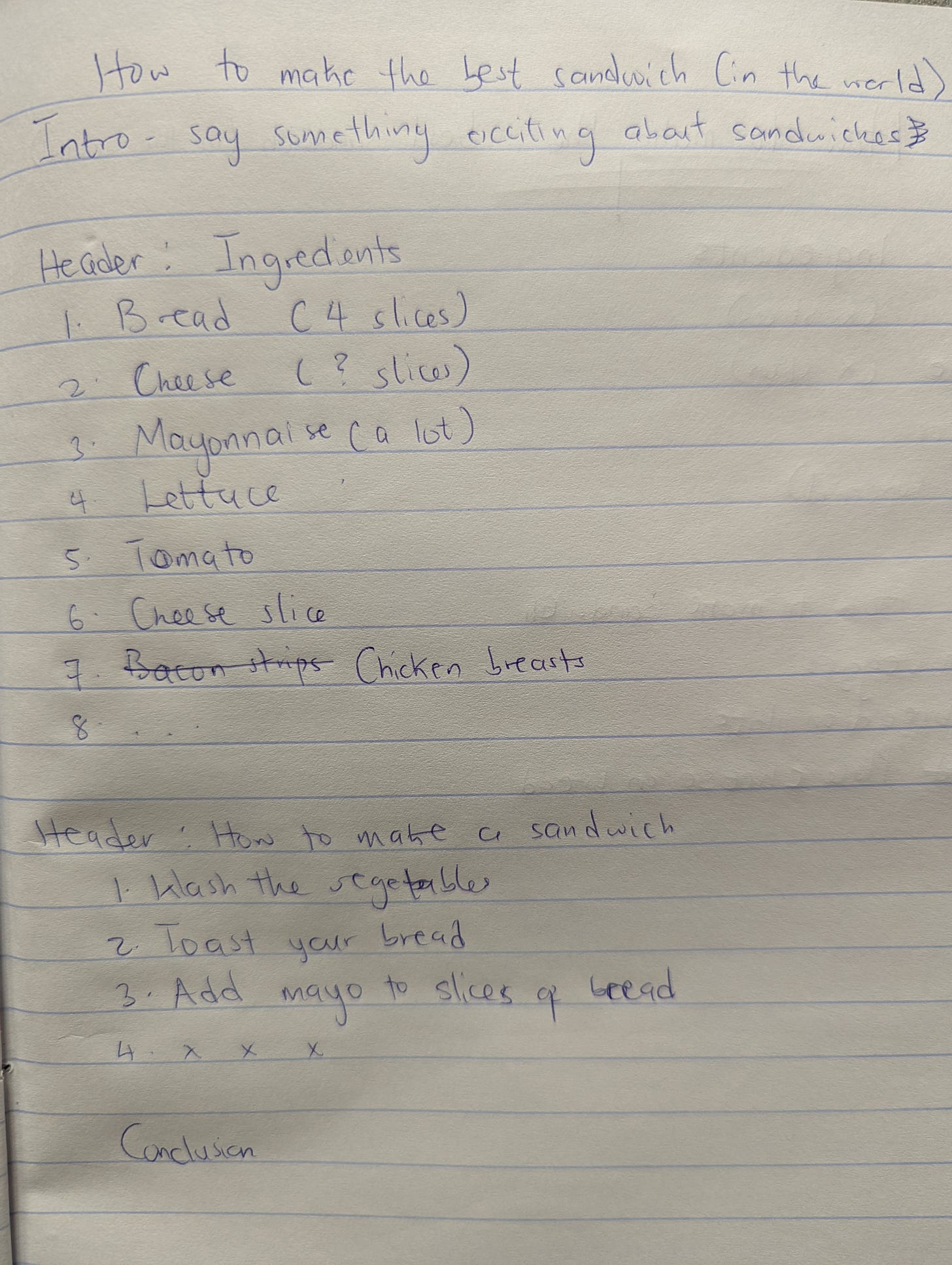A step by step guide to making the best sandwich in the world
Outlining is an underutilized way to create quick drafts
If you thought this post was about food, I apologize for the misleading title.
Have you ever freaked out at the sheer amount of writing you had to complete within a few days?
As you go from handling one project at a time to juggling three (or more), you develop a need to increase your writing speed to avoid pissing off clients.
(Would it have sounded better if I said you develop a need for speed?)
The usual urge is to rush into a draft after some minutes of cursory research. The faster you get to it, the faster you’d be able to finish it right?
Well, no.
You might be able to get a few words in but before you know it, you are grinding to a halt because you are not so sure what steps customers need to follow to set up an ecommerce shop. So you start googling to fill the gaps. Then you fall into the research rabbit hole and before you know it’s 5 pm and you’ve got more blank space than text in your draft.
As I noted earlier in this post, you can’t rush writing. You need to research extensively (within the time constraints) and let ideas sit before you get to work.
That's just one way to write faster. Now let's talk about an underutilized way to create quick drafts.
🥁 🥁
Outlining!
Although I've never been a huge fan of outlining, my time at an agency has taught me its importance.
With outlining, you plan the direction of your draft beforehand. You know where to go and how to get there before you start writing. You can detect problems with your draft before going in too deep.
Imagine an outline as a map.
Instead of getting into your car and guessing the right turns to take, you can just follow the path it prescribes.
You can drive for miles and miles at a consistent speed because you know where you are good.
The same goes for writing, it is so much easier to get from point A to point B when you follow an outline.
And the best part is that your readers can also understand your reasoning because it is linear. You don't have to worry about losing them along the way.
So how do you outline?
Well, start with researching the topic.
Then identify the questions you’ve to answer.
If you are writing a post on “The best way to make a sandwich“, you know you need to tell your readers two things:
the ingredients and quantities they need
the right order to arrange the ingredients
Now you’ve your subtopics.
And to answer your question, no you don’t need to start with an intro. I prefer to leave the introduction and conclusion for last because they are so hard to write.
You can then move on to fleshing out each section. For example, your outline will include ingredients like bread, cheese, meat, veggies, etc. You can always research how much of each your reader needs to use.
Repeat for the next section.
You don’t need to go into a lot of details. Details belong in the first draft. For now, focus on the basics.
Here’s a really vivid illustration I made for you by hand.
Not all outlines will be this simple. But I hope this helps you get the idea.
If you want a deep dive into outlining, here’s a helpful guide. You can decide to follow their method and write the intro and conclusions before the body. Or you can just leave it till later.
And you must have noticed that my sandwich recipe is incomplete. Don’t fright. Here’s a real post on how to make great sandwiches.


Where's the food recipe ma'am?